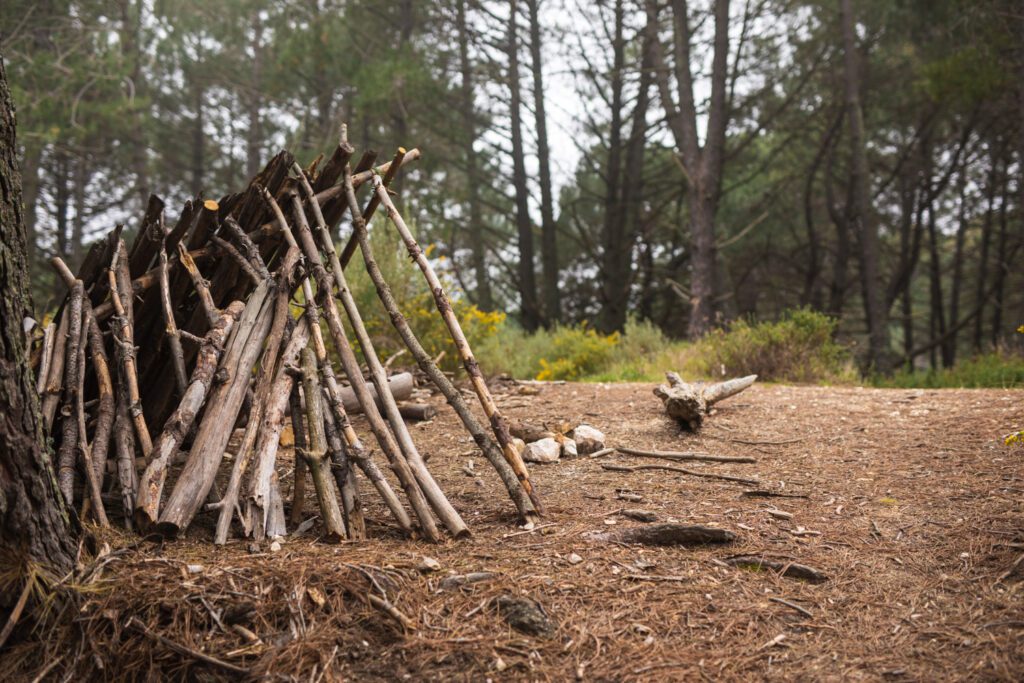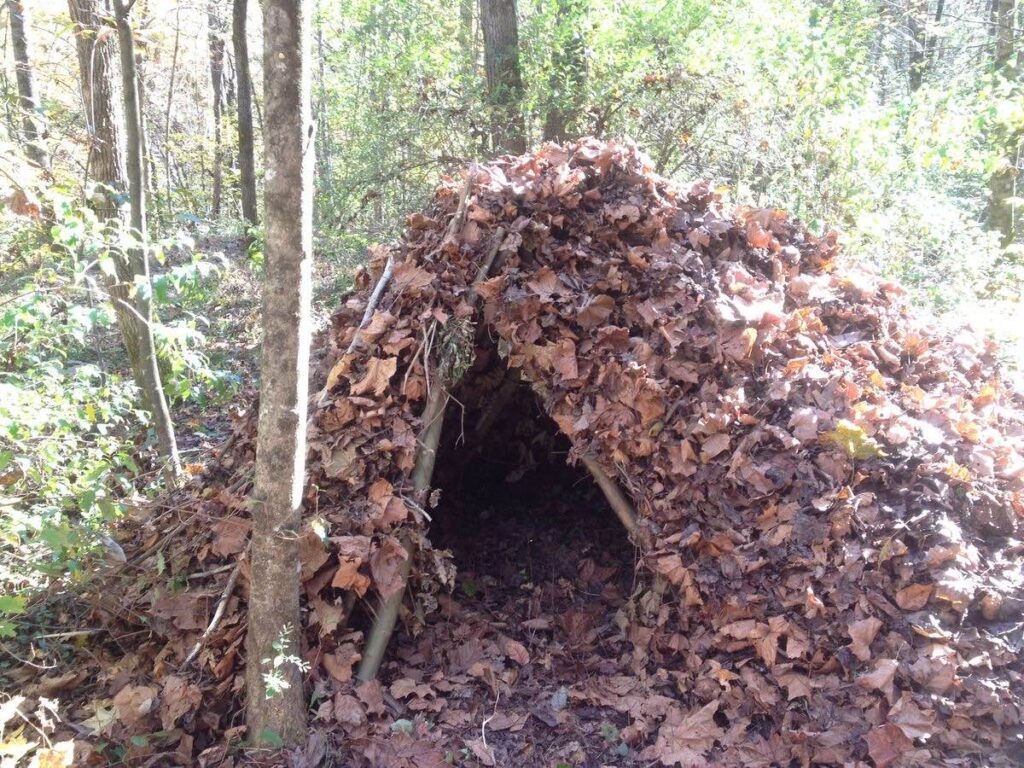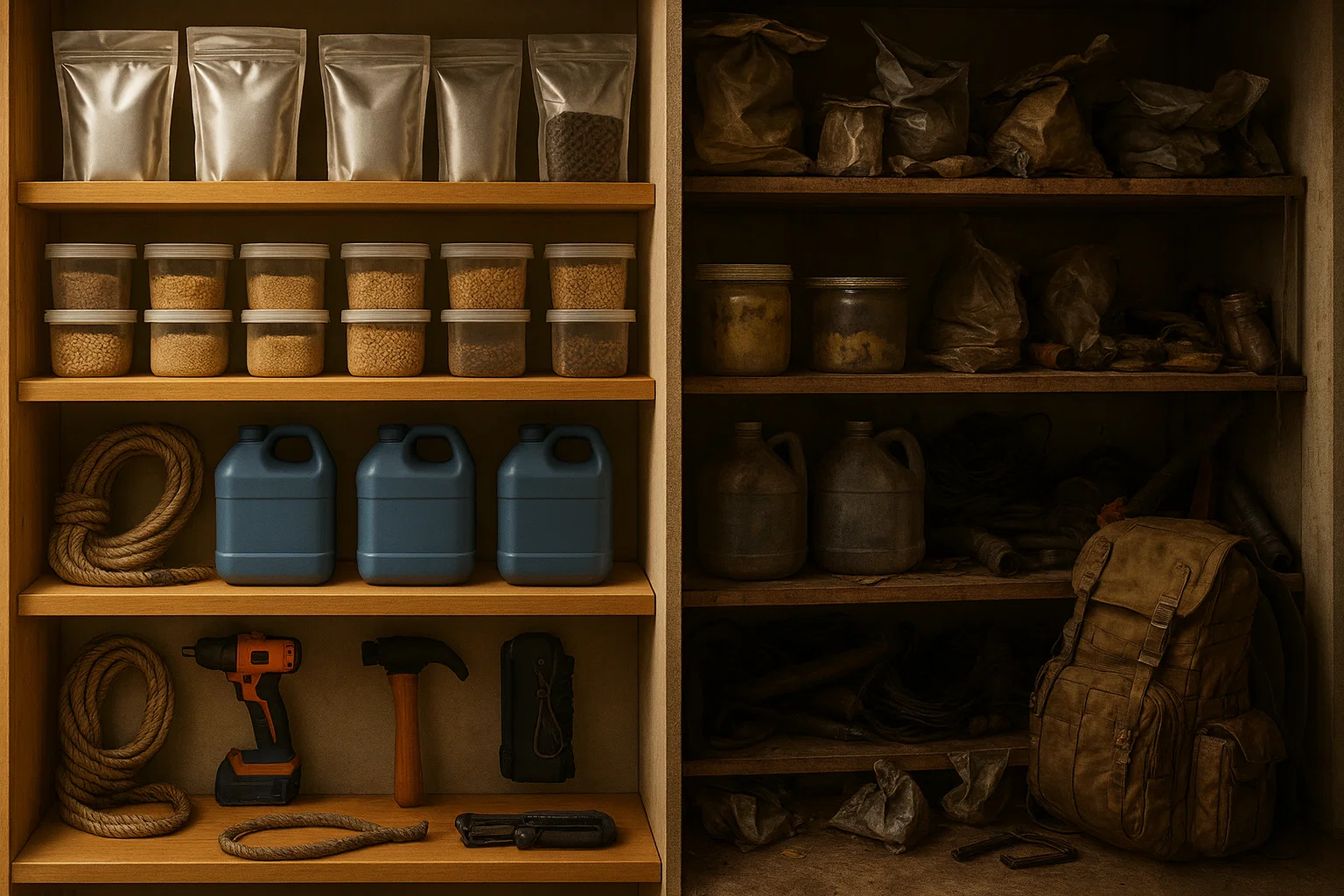Your first line of defense in any survival scenario is your survival shelter. It offers you security, shelter from the extreme weather, and a place to sleep. However, in the event of severe weather conditions, such as an unplanned flood, strong winds, or a snowstorm that causes a collapse, even the most resilient disaster shelters may fail. Knowing how to respond in these situations can mean the difference between extreme weather shelter survival and dire outcomes.
Picture this: You’ve spent time building your emergency shelter, stocked it with necessities, and doing everything correctly. Then, out of nowhere, Mother Nature delivers a curveball, and your secure environment begins to unravel. It’s a terrible concept, but one you can prepare for with proper disaster preparedness.
Having a survival plan is not enough to ensure survival. Knowing how to adjust when that plan doesn’t work out is key. We’ll walk you through what to do in this guide if severe weather compromises your shelter. The secret? Remain cool, move quickly, and be prepared for anything that may come up next in your extreme weather survival.
Step 1: Evaluate the situation immediately and thoroughly.
When things go wrong, your initial instinct may be to jump in and begin correcting whatever is wrong with your emergency shelter. But hold on. Before you can act, you must first understand the situation. Moving too quickly without assessing the issue can put you in much greater risk. So, take a deep breath, remain calm, and assess the situation to ensure your survival shelter is safe.
- Structural Stability: Look around and check the structure of your shelter. Is the roof sagging? Are the walls starting to give way? Cracks or instability are big warning signs that you’re not safe in there. If anything looks off, you need to get out now. Don’t risk sticking around when the roof could collapse, or walls might fall in. Safety in extreme weather comes first, even if it means leaving behind what you’ve built.
- Water Intrusion: Water can cause chaos fast. Even just a couple of inches can soak your gear, ruin your supplies, and make you cold in a hurry. Worse, floodwater isn’t clean, it can carry dangerous chemicals or bacteria. If you notice water creeping in, act quickly. Assess how fast it’s rising and if you’re at risk of getting cut off. You need to make sure your gear stays dry and think about moving to higher ground if the extreme weather conditions continue.
- Wind and Flying Debris: Wind doesn’t just blow things around, it can turn loose objects into dangerous projectiles. If there’s debris nearby, secure what you can. Look at your shelter closely. If pieces are missing, like roof shingles or parts of the walls, you might be able to make a quick patch job. But if the damage is serious and the wind’s only getting stronger, it might be time to think about getting out of there to ensure survival shelter safety.
- Temperature Fluctuations: When extreme weather hits, the temperature can swing fast, and that’s a major threat. If your shelter isn’t holding up and the cold is creeping in, you’ve got a serious problem. Hypothermia can sneak up quickly if you’re not warm enough. Focus on heat, build a fire if you can, pile on any layers you’ve got, or find something to insulate yourself. Keeping your body temperature steady could mean the difference between making it through or facing something worse in an extreme weather survival scenario.
Step 2: Reinforce or Retreat
After sizing up the damage to your survival shelter, you’re faced with a critical choice: do you try to fix it up, or is it time to get out and head for a safer emergency shelter? This is where trusting your instincts is key. If the damage is minor, maybe a small leak or a wall that’s showing a bit of wobble, you might be able to patch things up and stay put. Fixing the roof, plugging leaks, or propping up weak spots could give you just enough time to ride out the storm or extreme weather conditions.
Learn how to identify and forage essential plants that can keep you alive in the wild.
But if it looks like the shelter’s on the verge of collapsing or the flooding is getting uncontrollable, it’s time to get real. Sometimes leaving your disaster shelter behind, even after all the effort you put into it, is the only way to stay safe. The reality is, shelters can be rebuilt, but your safety during extreme weather shelter survival has to come first.
Option 1: Reinforce the shelter.
If the damage isn’t too bad, your first step should be to reinforce the survival shelter and make sure it’s secure. Start by inspecting the roof and walls closely. Got a tarp or plastic sheeting? Perfect, cover up any exposed sections immediately. Use anything you’ve got, ropes, paracord, even strips of cloth, to tie it down. No tarp? No worries, improvise with whatever waterproof materials you have on hand: garbage bags, emergency blankets, even plastic sheeting. The key here is to block out the wind and rain before things get worse.
Water is your main enemy at this point. If you’re outside, dig a trench around the emergency shelter to divert water away, it’s a quick and effective fix. If you’re inside and the water is already coming in, grab whatever you can, buckets, pots, even empty containers, to catch it before it soaks everything. Keep your gear off the floor by stacking it on rocks, shelves, or whatever you can find. Wet clothes and gear can kill your chances of staying warm and dry, and in extreme weather survival, that’s a huge risk.
Lastly, if the wind is starting to really pick up and it feels like your shelter might give out, reinforce it by propping up weak spots with branches, boards, or even large rocks. The goal here isn’t perfection, it’s survival. You just need to make sure your disaster shelter holds up long enough for you to ride out the storm or decide to make a move.
Option 2: Evacuation to a Secondary Shelter
There are times when, no matter how prepared you are, your survival shelter won’t hold. If the roof’s caving in, water’s flooding inside, and debris is being blown everywhere, it’s time to evacuate. It’s a tough decision, but you’ve got to know when sticking around could make things worse.
What’s the game plan? First, grab your essentials. Hopefully, your bug-out bag is already packed and ready. If not, gather up the crucial items, water, food, fire-starting tools, and first aid gear are your top priorities in any emergency preparedness situation. Don’t waste time trying to grab everything; focus on the gear that’s going to keep you alive. It’s not about comfort, it’s about extreme weather survival.
If flooding is the problem, your priority is to get to higher ground fast. Out in the wild, look for ridges, hills, or even large boulders to keep yourself above the rising water. In urban areas, head for upper floors in buildings or parking structures, wherever you can find a solid spot that keeps you safe from the water. Always have an exit strategy in place, things can escalate quickly in a disaster survival scenario.
Once you’ve escaped immediate danger, your next focus is to find a new emergency shelter. In the wilderness, natural shelters like caves, dense tree cover, or rock overhangs can provide temporary safety from the elements. In urban environments, an abandoned building or even a vehicle might be the best option for shelter in a hurry. Stay alert and keep your eyes peeled, anything that shields you from the elements is a win until you can figure out your next steps for survival shelter safety.
Step 3: Find a Secondary Shelter Quickly
When your main survival shelter collapses, quick thinking is your best tool. If you’re a seasoned prepper, you’ve probably already mapped out a few backup locations. Whether you’re deep in the woods or stuck in the heart of a city, knowing where to find emergency shelter fast is crucial for your extreme weather shelter survival.
Wilderness shelter options

Natural shelters: Start by searching for natural formations like caves, large rocks, or dense tree cover. These spots can offer quick protection from extreme weather. However, don’t dive in without a quick safety check. Caves might flood or collapse, and trees can come down in strong winds. Always make sure the natural shelter is stable enough to see you through the worst of it. In any extreme weather survival scenario, safety comes first.
Debris Hut: If nature doesn’t provide a ready-made solution, you’ll need to build your own survival shelter. Gather some long branches and create an A-frame structure. Cover it with leaves, moss, or anything else that can act as both insulation and a waterproof barrier. While it won’t be the most comfortable option, it will give you enough protection to get through the night or the worst of the storm in a survival emergency.

Learn the Critical First Aid Skills You Need to Survive When SHTF
Urban shelter options
Abandoned buildings: In an urban area, your best bet for emergency shelter could be an abandoned or damaged building. Even if it’s not in perfect shape, it will keep you safer than being out in the open, exposed to the elements. If there’s a risk of flooding, head to the upper floors to stay safe and dry. Always think about your survival shelter safety before making your move in any extreme weather situation.
Vehicles: If you come across a car or bus, it can make for a surprisingly effective emergency shelter. It will keep out the wind and rain, and you can crack a window to allow airflow. Using reflective materials, like a Mylar blanket, can help trap heat inside, turning the vehicle into a decent temporary shelter. While it’s not the most comfortable place to spend time, it will work in a pinch, especially during a disaster shelter survival scenario.
Makeshift Shelters: If you’re really out of options, it’s time to get creative. Use whatever materials you can find, tarps, plastic sheeting, or even blankets, to construct a quick lean-to or tent. Weigh it down with rocks or branches to keep the wind from dragging it away. While it won’t be a long-term solution, it’ll do until you can find something better for extreme weather survival.
Step 4: Signal for Help
When your shelter no longer keeps you secure and you’re in a difficult situation, signaling for help is sometimes the best course of action. It’s all about making yourself as visible as possible, whether someone is nearby or far away. But don’t start signaling at random, you need to think strategically about how to grab someone’s attention. The more prepared you are, the higher your chances of being seen or heard when it matters most.
First, let’s talk visual signals. If it’s daytime, grab a signal mirror or anything reflective and flash it toward any planes or helicopters you see. Even a small reflection can be seen from miles away. If it’s night, a fire is your go-to option. Fires are great for signaling, and if you toss in some green leaves or damp wood, you’ll get plenty of thick smoke to make yourself even more visible.
Now, if you can’t rely on being seen, you’ll want to use auditory signals. A whistle is perfect for this, three quick blasts, and anyone familiar with survival knows you’re in trouble. If you don’t have a whistle, banging metal objects together or just making some repetitive, loud noise will do the trick. The idea is to be heard, so make sure your sound stands out from the environment.
Don’t forget about your communication devices. When you require assistance, a hand-crank or solar-powered radio is invaluable. Many include built-in SOS functions or torches, offering you more methods to call for assistance. If you’re carrying a phone, take care of its battery. Use it judiciously to ensure you have enough juice when you need it the most.
Step 5: Avoid future shelter failures.
Avoid future shelter failures. Build for durability: When building or fortifying your shelter, you must think long term. Invest in weather-resistant materials such as pressure-treated wood, aluminum sheeting, and heavy-duty tarps. These things are designed to withstand the worst, whether it’s a bad storm, severe winds, or heavy snowfall. In survival scenarios, it is usually preferable to overbuild than to wish you had done more when the weather changes.
Weatherproof: You don’t want holes or weak points in your shelter. Go over each crack and crevice and caulk them tightly. Reinforce the roof so it can withstand heavy downpours or snow. Don’t forget about water protection, set up sandbags or any other obstacles to keep flooding out. The more work you put into weatherproofing now, the less panicked you will be when the storm strikes.
Scout Backup Locations: Even if your shelter feels like a fortress, don’t rely on just one option. Always have a backup plan. Scout out other locations ahead of time, whether you’re deep in the wilderness or in an urban area. The last thing you want is to be caught off guard without another safe spot in mind. Having a few backup shelters could make all the difference if you have to move quickly.
Monitor the Weather: A weather radio might not seem like a big deal, until you need it. Keep one close by, because it’s your best shot at getting an early heads-up about incoming storms. That advance warning gives you the time to reinforce your shelter or make the call to evacuate to a backup spot. Trust me, the earlier you know what’s coming, the better off you’ll be.
When it comes to survival, one thing is certain, things will not always go as planned. Extreme weather can compromise your shelter, no matter how carefully made it is. The goal is to remain calm, analyze the situation, and act quickly, whether that means strengthening what you have or moving to a backup shelter. Being prepared entails more than simply possessing the necessary equipment; it also includes learning how to adapt when things go wrong.
Remember that building a robust shelter isn’t enough; you also need to preserve it that way. Build it strong, waterproof it as if your life depended on it (which it might), and always have a backup plan. Remember to keep an eye on the weather, because those extra minutes of warning could make all the difference.
























1 Comment